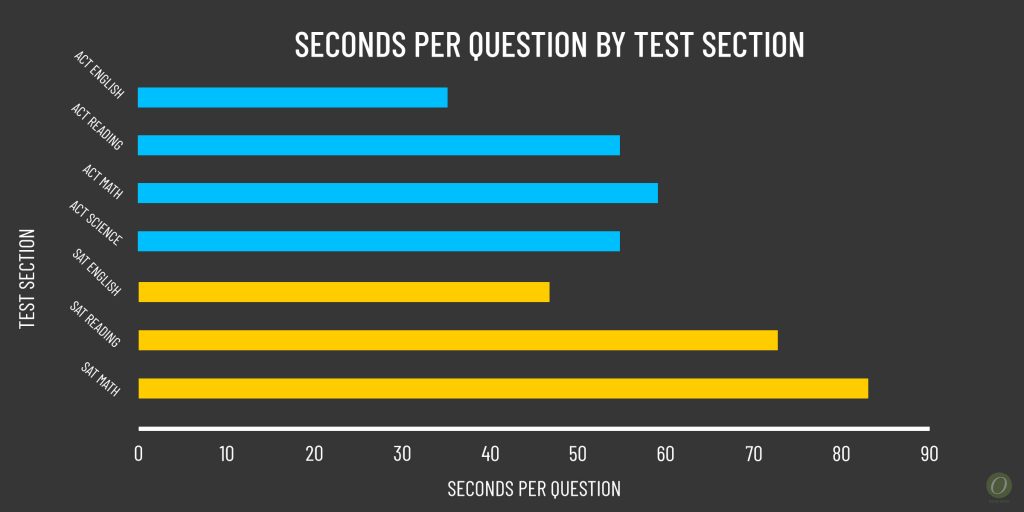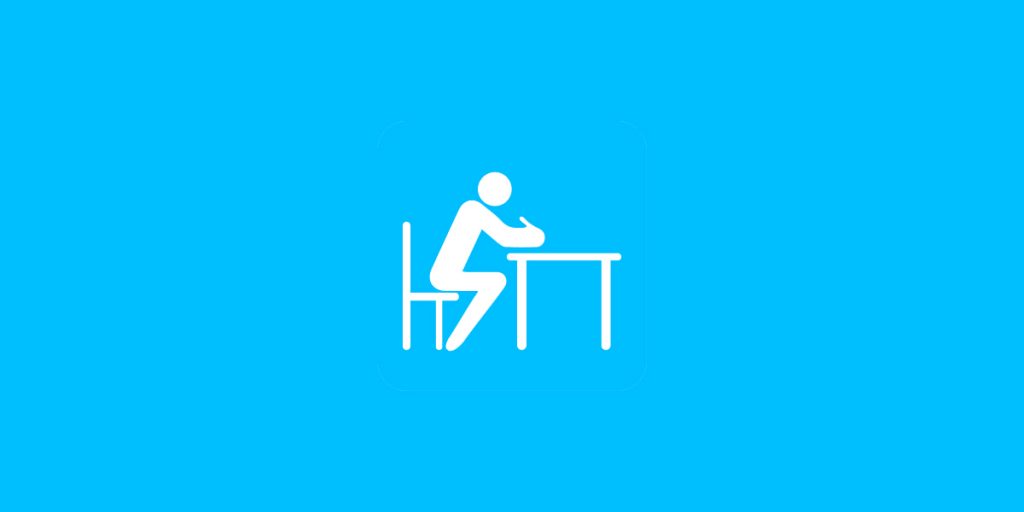Are you thinking about switching from the SAT to the ACT?
While the tests have become much more similar in the past 5 years, there are still a few key differences you need to know about before switching from the SAT and diving into your first ACT test.
ACT Test Overview
Just like the SAT, the ACT is a nationally-recognized college admissions test accepted by all US universities. And since the 2016 redesign of the SAT, the tests have many similarities and only a few differences.
ACT Test Content
The ACT contains 4 sections: English, Math, Reading, Science (and an optional Essay section)
The test is 2 hours, 55 minutes long. You can use your ACT-approved calculator for the entire Math section.
Because of the passage-based Science section, you spend more of your time reading on the ACT than you do on the SAT. Conversely, you spend a little more time doing math on the SAT.
ACT Test Scoring
The individual sections (English, Math, Reading, Science) are each given a score from 1- 36, with 36 being the highest potential score. These four scores are averaged to create a composite score, which is also out of 36.
Your ACT score report also provides a STEM score and an ELA score, which are the averages of your Math and Science scores, and English and Reading scores, respectively. However, colleges generally put the most weight on your composite score.
Learn more about the ACT:
How is the ACT Scored?
ACT Reading Resources
ACT English Resources
ACT Science Resources
ACT Math Resources
Three Things to Know about the ACT
The first thing to know is the ACT is a faster-paced test. Second, there is a Science section on the ACT. And the third thing to know is the ACT Math section has some key differences from the SAT Math section. We cover each of these three things to know in detail below:
1) The ACT is a Faster-Paced Test
The ACT test runs at a faster pace than the SAT. At a total runtime of 2 hours, 55 minutes, it is about 5 minutes shorter overall than the SAT, and you have less time per question in every section of the ACT compared to the SAT.
Don’t let this totally freak you out; you can see in the chart below that the SAT only gives you fractions of minutes more per section than the ACT. With some dedicated attention to your pacing, you can quickly adjust your timing per question.
| ACT Section | Time, # of Questions (q) | Minutes per Question | SAT Section | Time, # of Questions (q) | Minutes per Question |
| English | 45 min, 75 q | 0.6 min/q | Writing & Language | 35 min, 44 q | 0.8 min/q |
| Reading | 35 min, 40 q | 0.9 min/q | Reading | 65 min, 52 q | 1.23 min/q |
| Math | 60 min, 60 q | 1 min/q | Math | 80 min, 58 q | 1.4 min/q |
| Science | 35 min, 40 q | 0.9 min/q | |||
| TOTAL | 175 min, 215 q | 180 mins, 154 q |
How to Perfect Your ACT Pacing
2 ) The ACT has a Science Section
If you’re making the switch from the SAT to the ACT, it’s important to know about the ACT’s Science section. There is nothing like this on the SAT; it’s the closest neighbor on the SAT is the data representation passage.
Much like the Reading section, the Science section is passage-based. The section is broken up into six passages with accompanying questions. There are 40 questions total, and you have 35 minutes in which to read the passages and answer the questions.
The Science section is passage-based. The section is broken up into six passages with accompanying questions. There are 40 questions total, and you have 35 minutes in which to read the passages and answer the questions.
The Science section will ask you to read and interpret data, quickly gather information from scientific articles, and apply your understanding of scientific processes. The content of the Science section is based on what you have learned in school so you should be familiar, on some level, with much of the content.
How is the ACT Science Section Structured?
However, you really need to do at least 2-3 practice Science passages before taking your first ACT. You have to go fast on this section and you need to practice so it doesn’t take you by surprise on test day!

The addition of the Science section means the ACT test is heavily reading based – 3 out of 4 sections contain passages to read and interpret! If you are a fast reader, then the fact that there is a ton of reading on the test is actually good for you!
For more Science tips, check out our other ACT Science blog posts. You can find practice passages and questions for ACT Science in our online ACT course.
3) ACT Math is More Straightforward and Covers Different Material
The ACT Math section is more formula-based, while the SAT math has longer word problems. In general, ACT Math questions have fewer words and it is a little more clear what the question is asking. Some students feel that the ACT math section is more straightforward because of this difference.
In general, ACT Math questions have fewer words and it is a little more clear what the question is asking.
Basically, the SAT uses more data in its questions and has a greater amount of long word problems. The ACT is more “mathy,” requiring formulas and specific processes, but has less wordy questions and answers. Specifically, the ACT Math section contains more trigonometry, logs and matrices, quadratics, and conics than the SAT. But let’s keep this in perspective; these extra topics amount to only 4-7 questions that you might see on the ACT that you would not see on the SAT.
Another difference is that the ACT Math section only counts for 25% of your score instead of 50% on the SAT. This is because of the way the two tests are scored; the ACT Math score is 1 of 4 scores averaged into the composite score and the SAT Math score is 1 of 2 scores averaged into the composite score.
Strategies for the ACT Math Section
Oh, and you can use your calculator on the entire ACT math section! But quick tip: just because you can, doesn’t mean you should. Use your calculator only when really necessary and to check your answers at the end (if you have time) so it doesn’t end up slowing you down.
The 3 Things to Know Before Switching from the SAT to the ACT:
- The ACT is a faster-paced test
- The ACT has a Science section
- ACT Math is more straightforward and covers different material
If you’ve already prepared well for the SAT, switching to the ACT will be a breeze as long as you take note of the key differences between the test. The main thing you want to do is familiarize yourself with the timing and structure of the ACT (the Science section in particular).
You can study for the ACT by enrolling in Olive Book’s online ACT course. Head to www.olive-book.com to enroll!
